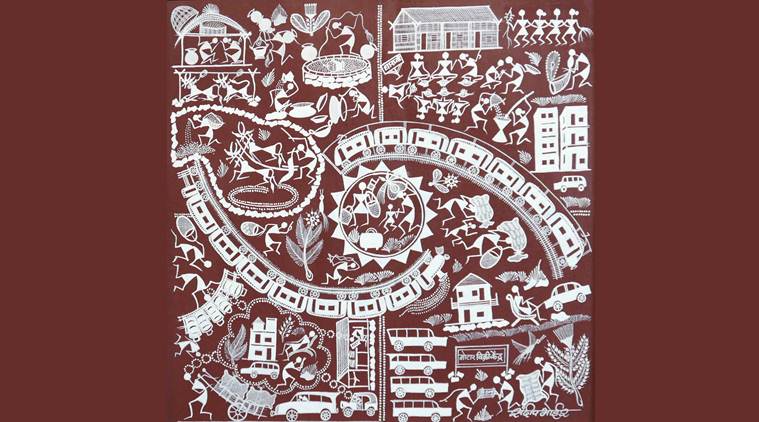Engines of Change
Mumbai-based design firm, urbz, believes we are living in an urban loop that is effective because of our dense rail network.
 The exodus from rural India to its booming megacities does not end in hyper-dense urban settlements. The journey loops back to the villages that keep transforming just as rapidly as the cities.
The exodus from rural India to its booming megacities does not end in hyper-dense urban settlements. The journey loops back to the villages that keep transforming just as rapidly as the cities.
The Indian subcontinent is criss-crossed by thousands of miles of railway tracks that carry nine billion passengers every year. They connect millions of Indians who live away from their ancestral villages, helping them maintain active relationships across great distances.
The exodus from rural India to its booming megacities does not end in hyper-dense urban settlements. The journey loops back to the villages that keep transforming just as rapidly as the cities. Trains go back and forth, carrying an immeasurable flow of people and goods that seem to exist in a permanent state of flux.
Home is both here and there at the same time; where the ideal urban home remains out of financial reach for 99 per cent of Indians and the village is unable to fulfill the growing economic and educational demands of the middle class. This explains why an immense number of families from Mumbai, Delhi, Bangalore or Chennai typically maintain two homes — a small, crowded one in the city, and the other in the village into which they invest their savings. This makes the Indian village very much a part of the future — one that is resolutely urban, networked and circulatory.
It also makes a substantial section of metropolitan India deeply integrated into its rural hinterland and connected with small towns and trading hubs, creating a network of urban systems.
Mumbai’s identity is very much a legacy of various circles of migratory movements, from the Konkan to the Maratha heartland, from coastal Gujarat to eastern India and the state of Tamil Nadu. Its neighbourhoods and localities are imprinted from elsewhere even as the city reproduces splinter versions of itself in faraway places.
The Warlis are an Adivasi community living on the other side of Mumbai city, with their own rich gaze that sees the city through such a circulatory loop. In the Loop by Warli artist Sandeep Bhoir is a painting in natural pigment colours on canvas. While Warli images are ubiquitous in the city and seem all too familiar, Sandeep’s painting strikes at the heart of the urban question with a very clear eye.
This collaborative painting (made in partnership with urbz) depicts a family whose life is divided between an ancestral habitat and a modern urban life. The train journeys around the village and the city, connecting both in an infinite loop, organising their lives in several permutations and combinations: a traditional ancestral village, a village-like settlement in the city, an urbanising rural village, and a modern aspirational city.
The future of urban India will more or less work around this template. Simplistic formulations of dramatic rural-urban demographic shifts or linear evolution of a city’s built-forms following sci-fi fantasies will only be a very small part of the story.


Photos



- 01
- 02
- 03
- 04
- 05






















